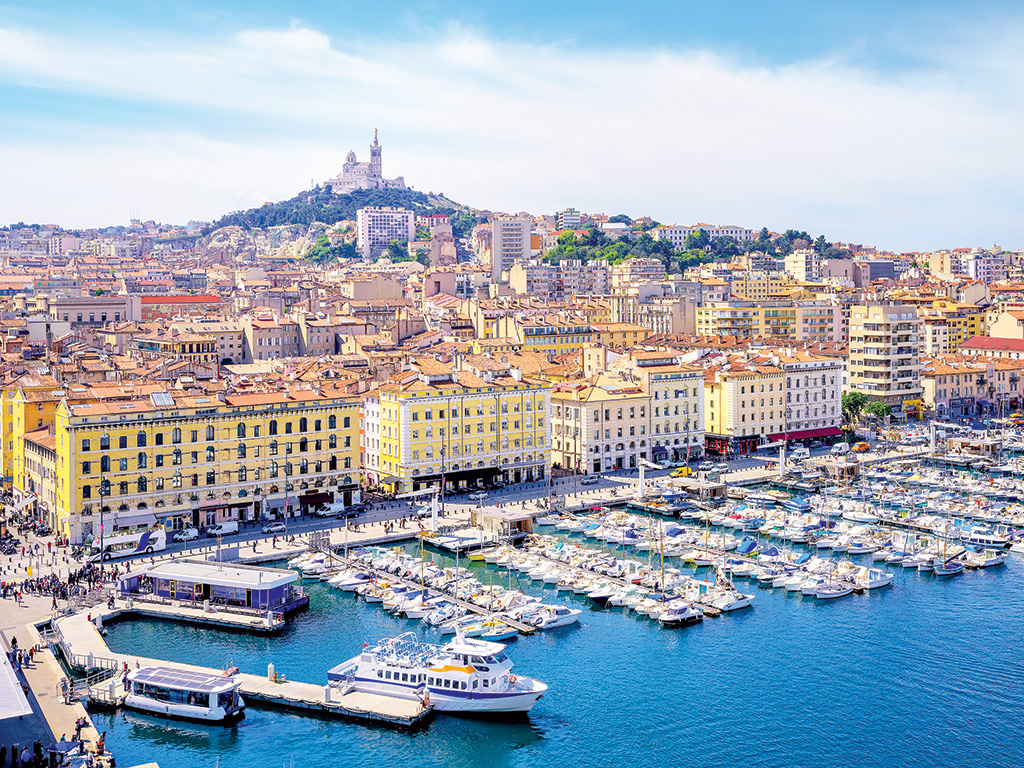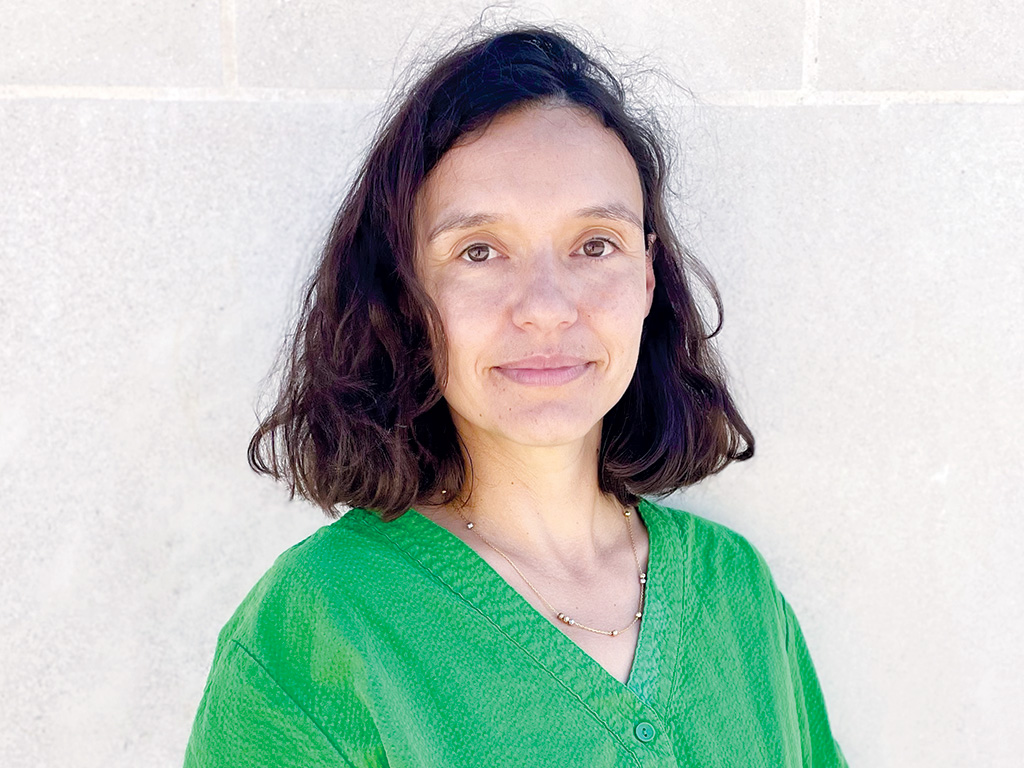France’s second city has plenty to offer the Arabic tourist, finds Keith J Fernandez


In recent years, GCC travellers have begun to head south to France’s Mediterranean coast, drawn by the laidback luxury of St Tropez, Cannes, Nice and the Côte d’Azur.
Between the two magnets sits Marseille, severely underrated and unfortunately hindered by an outdated reputation for being rough and ready. Ten years on since it was named the European Capital of Culture for 2013, France’s lively second city boasts a renewed Old Port district, a trendy, third-culture gourmet scene, enough luxury shops to thrill the mall maven, and a dizzyingly diverse range of tourist products.
Within the city or a short distance away are arty, urban circuits and glamorous on-the-water experiences to mini history lessons and an emerging category of sustainable and climate-focused stops. There are enough picturesque villages in the vicinity to fill your Instagram feed, at least half a dozen ski resorts are within three hours’ driving distance, and St Tropez sits just two hours away.
That’s why Marseille serves as a great base for tourists, Emilie Bonnell, Promotion Officer at the Marseille Tourist Office, Leisure and Convention Bureau, told a group of travel agents on a November fam trip. Although GCC travellers aren’t yet among the top 10 source markets, the tourism board hopes that will change soon, now that Transavia has launched a thrice weekly service to Dubai. Flynas already links to Jeddah. Marseille is also just an hour and a half away from Paris, or three hours by train.
Certainly, footballer Zinedine Zidane’s native city has more than enough for GCC tourists looking for a new destination that also offers the comforts of home. The local Louis Vuitton store in the city’s upscale sixth arrondissement is a favourite stop, as is Hermès next door, and Mont Blanc up the street. Galeries Lafayette offers a curtained-off private shopping experience at a mall just 10 minutes away and next door to Orange Vélodrome, home to the storied Olympique de Marseille football club since 1937. Down on the pier, tourists can charter a yacht for sundowners or brunch – complete with an Arabic-speaking crew, mint tea and Moroccan sweets.
As for eating out, seafood is the norm. Many restaurants specialise in freshly caught fish and the classic bouillabaisse is widely available. Halal restaurants are common, with Palestinian, Lebanese and Moroccan restaurants well represented. Tourists will also often find that Marseille is easier on the pocket.
Like many major French cities, Marseille has a large foreign population. Unlike its peers, however, there’s a multicultural affability that indicates integration has been more successful. That may be because of Marseille’s encounters with other Mediterranean people since it was founded in 600 BC by the Phocaeans, Greek merchants from what is modern-day Turkey. Muslims have been here on and off for at least a thousand years.
Or perhaps the city’s cosmopolitan spirit is an expression of its independence, as we’re told time and again – Marseille is French, but also not typically so, and only became a part of France in 1482.
We experience Marseille’s best at the Intercontinental Marseille-Hotel Dieu, one of just four major five-star hotels listed on the tourism office website (there are another 23 four-star establishments). Before its renovation and opening as an Intercontinental in 2013, the property was a major hospital, dating to 1188. The hotel’s capacious Harbour View rooms and suites provide a restorative sojourn even today. Their sprawling balconies look out over the port and onto the Notre Dame de la Garde, the towering basilica that is a symbol of Marseille.
The city’s most popular sight, it draws Arabic tourists, too, says Anjelika Solé, one of the few Arabic-speaking guides in the city. Typically, they take a car to the hilltop church to breathe in what the nineteenth-century diplomat and writer François-René de Chateaubriand described as “the sea bordered with the ruins the laughing coasts of all the famous countries of Antiquity.”SIGHTS AND SOUNDS OF MARSEILLE
Agents constructing itineraries in Marseille should look to include the following sights and experiences, many bookable at Marseille-tourism.com.
1. Vieux-Port: Lined with colourful boats and bustling with energy, Marseille’s historic Old Port offers picture-postcard photo opportunities, but it’s also where you can find charming cafés, book a cruise around the harbour or experience how traditional soap is made. Stop at Les Grandes Halles, an upmarket food court.
2. Basilique Notre-Dame de la Garde: Built on the foundations of an ancient fort, this nineteenth-century church stands as a sentinel over the city. Adorned with intricate mosaics, it offers a panoramic view of the Mediterranean.
3. Le Panier: Vibrant murals, artisan boutiques, alfresco restaurants and impromptu jam sessions bring to life the narrow streets of Le Panier, Marseille’s oldest district. Stop for the eclectic architecture.
4. Grotte Cosquer: The Villa Méditerranée hosts a replica of the Cosquer Cave, which was hidden for 30,000 years at a depth of 37 metres beneath the sea until it was discovered by the diver Henri Cosquer in 1985. Replicas of prehistoric wall art can be explored in an ‘underground’ theme ride that is one of the highlights of Marseille. Upstairs, visitors can see how climate change is slowly destroying the cave.
5. MuCEM: The Museum of European and Mediterranean Civilisations explores cultural commonalities between the countries around what classical Arabic writers refer to as Bar al-Rūm or the Sea of the Romans. Exhibitions on food, fashion and contemporary life compete with a sunny rooftop café, while the footbridge connecting the museum to the historic district offers stunning views of the sea and Fort Saint-Jean.
6. Terrasses du Port and Les Docks Village: Modern shopping in a historic warehouse quarter with several high-end and high-street brands.
7. Château d’If: Book a boat tide to the infamous island fortress immortalised by Alexandre Dumas in The Count of Monte Cristo. Its eerie dungeons and high gun ramparts will thrill anyone with a sense of adventure; for something a bit more special, it can be booked out for private events.
8. Orange Vélodrome: Football enthusiasts will want to make a pilgrimage to the home of the OM (Olympique de Marseille, Marseille’s football team) France’s most successful football clubs and the sole French team to clinch the Champions League in 1992. it stands as a shrine for sports aficionados. Guided tours take in the pitch, the trophy cabinet, the team lockers and the press conference room.
